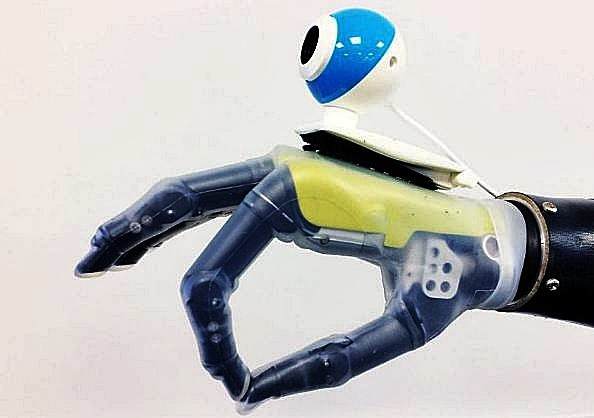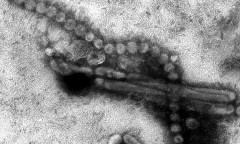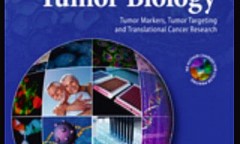By Arthur Dominic J. Villasanta , | May 04, 2017

Prosthetic hand that can see.
A new generation of prosthetic limbs will allow wearers to reach for objects automatically, without thinking -- just like a real hand.
This new bionic hand will be tested for the first time and will be the first step towards a fully connected bionic hand, said biomedical engineers at Newcastle University who developed the new hand.
Like Us on Facebook
The bionic hand is fitted with a camera, which instantaneously takes a picture of the object in front of it, assesses its shape and size and triggers a series of movements in the hand.
The hand's technology bypasses the usual processes, which require a user to see the object; physically stimulate the muscles in the arm and trigger a movement in the prosthetic limb.
In contrast, the new bionic hand with a camera "sees" and reacts in one fluid movement.
A number of amputees have already tested the new technology, and now the Newcastle University team are working with experts at Newcastle upon Tyne Hospitals NHS Foundation Trust to offer the "hands with eyes" to patients at Newcastle's Freeman Hospital.
"Using computer vision, we have developed a bionic hand which can respond automatically -- in fact, just like a real hand, the user can reach out and pick up a cup or a biscuit with nothing more than a quick glance in the right direction," said co-author on the study, Dr. Kianoush Nazarpour, a Senior Lecturer in Biomedical Engineering at Newcastle University.
"Responsiveness has been one of the main barriers to artificial limbs. For many amputees the reference point is their healthy arm or leg so prosthetics seem slow and cumbersome in comparison.
"Now, for the first time in a century, we have developed an 'intuitive' hand that can react without thinking."
Using a camera fitted to the prosthesis, the hand "sees" an object; picks the most appropriate grasp and sends a signal to the hand -- all within a matter of milliseconds and ten times faster than any other limb currently on the market.
The work is part of a larger research project to develop a bionic hand that can sense pressure and temperature and transmit the information back to the brain.
-
Use of Coronavirus Pandemic Drones Raises Privacy Concerns: Drones Spread Fear, Local Officials Say

-
Coronavirus Hampers The Delivery Of Lockheed Martin F-35 Stealth Fighters For 2020

-
Instagram Speeds Up Plans to Add Account Memorialization Feature Due to COVID-19 Deaths

-
NASA: Perseverance Plans to Bring 'Mars Rock' to Earth in 2031

-
600 Dead And 3,000 In The Hospital as Iranians Believed Drinking High-Concentrations of Alcohol Can Cure The Coronavirus

-
600 Dead And 3,000 In The Hospital as Iranians Believed Drinking High-Concentrations of Alcohol Can Cure The Coronavirus

-
COVID-19: Doctors, Nurses Use Virtual Reality to Learn New Skills in Treating Coronavirus Patients










